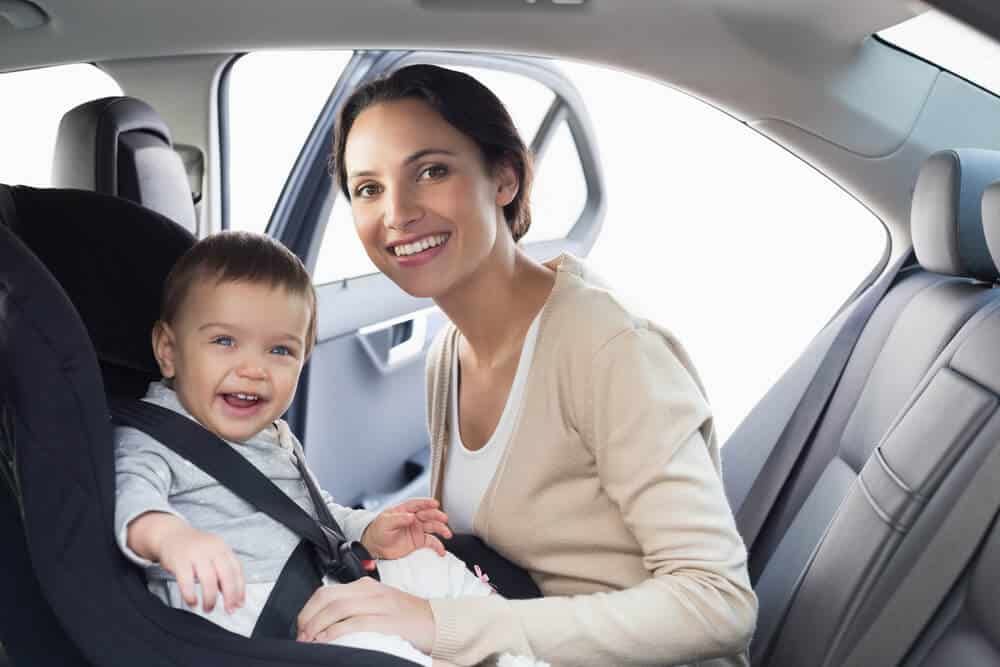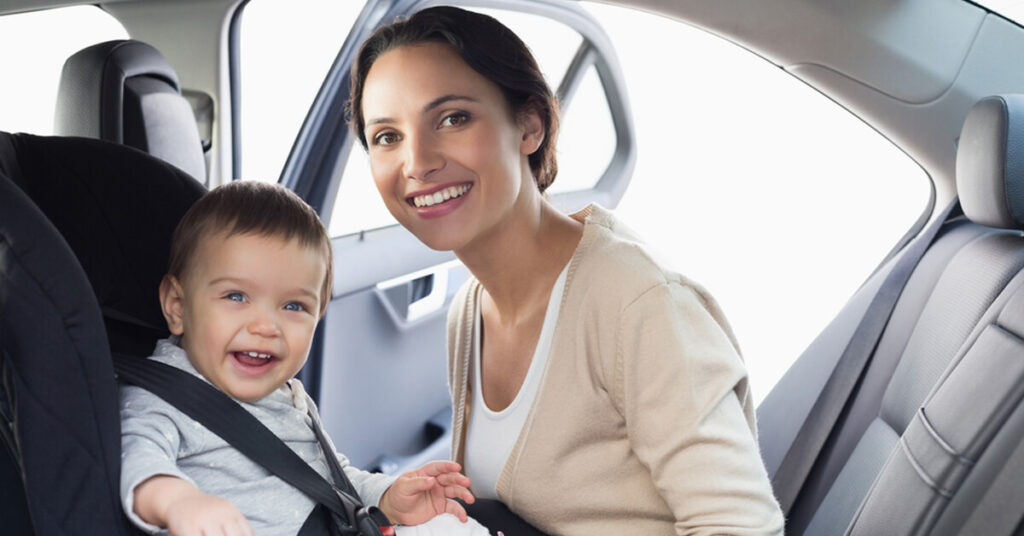Baby Doll Car Seat
Introduction
Baby Doll Car Seat Safety is a crucial aspect of ensuring the well-being of your child during car rides. However, it is not uncommon for babies to show dislike or even distress when placed in a car seat. This article explores the reasons behind this aversion and provides comprehensive strategies to transform the car seat experience into a more enjoyable and peaceful one for both baby and parent.
The Unexpected Challenge: Why Does Your Baby Detest the Car Seat?
Understanding the Importance of a Safe Car Seat for Your Child’s Well-being
Before delving into the reasons behind a baby’s aversion to the car seat, it’s essential to emphasize the significance of having a safe car seat for your child’s well-being. A properly installed and adjusted car seat provides optimal protection in case of an accident, ensuring your baby’s safety during car rides.
The Psychological Perspective: Understanding Your Baby’s Discomfort
Babies rely heavily on their senses to navigate and understand the world around them. Therefore, any disruption or discomfort caused by the car seat can significantly affect their psychological well-being.

Sensory Overload: How the Car Seat Affects Your Baby’s Senses
- The Snug Fit of the Car Seat Can Restrict Your Baby’s Movements, Leading to Sensory Overload.
- Babies naturally crave freedom of movement, and the tight constraints of a car seat can create sensory overload as they’re unable to explore and stretch their bodies.
- Unfamiliar Textures and Materials of the Car Seat May Create Discomfort for Your Baby.
- Babies are sensitive to different textures, and the unfamiliar materials of a car seat may feel uncomfortable and foreign to them.
- The Confinement of the Baby Doll Car Seat Safety Can Amplify External Sounds and Vibrations, Overwhelming Your Baby’s Senses.
- Car rides are often associated with vibrations and noises that can be intensified within the confines of a car seat, overstimulating your baby’s senses.
The Fear Factor: Unraveling Anxiety and Distress Linked to the Car Seat
- Babies May Associate the Car Seat With Negative Experiences, Such as Doctor Visits or Unfamiliar Surroundings.
- If babies have negative associations with previous experiences in a car seat, such as doctor visits or unfamiliar environments, they may develop anxiety or distress when placed in one.
- Some Infants May Feel Trapped or Confined in the Car Seat, Causing Fear and Distress.
- The sensation of being restrained or confined in a Baby Doll Car Seat Safety can trigger feelings of fear and distress in babies who crave freedom and mobility.
- The Unpredictability of Car Rides, With Sudden Stops or Turns, Can Contribute to Anxiety for Your Baby.
- Babies thrive on predictability, and the sudden movements and changes in momentum experienced during car rides can cause anxiety and unease.
Lack of Control: Discovering the Need for Independence in Infants
- Babies Have a Natural Desire for Independence and Autonomy.
- As babies grow and develop, they begin to crave independence and control over their surroundings, which can be compromised while being confined in a car seat.
- The Car Seat Takes Away Their Ability to Move Freely or Explore Their Surroundings, Leading to Frustration and Discomfort.
- Being restrained in a car seat restricts a baby’s ability to move freely and explore their environment, resulting in feelings of frustration and discomfort.
- Restless Infants May Rebel Against the Prolonged Time Spent in One Position, Seeking Greater Control Over Their Movements.
- Babies who are naturally restless and seek variety may become agitated and resistant to spending extended periods in one position, such as in a car seat.
The Need for Attachment: Addressing Separation Anxiety While Using the Car Seat
- Babies May Experience Separation Anxiety When Placed in the Car Seat, as They Are Physically Separated From Their Primary Caregiver.
- The physical separation from their primary caregiver can trigger separation anxiety in babies, especially if they rely heavily on the presence and touch of their caregiver for comfort.
- The Unfamiliarity of the Car Seat Environment Can Intensify Separation Anxiety, Causing Distress for Your Baby.
- The car seat environment may seem unfamiliar to babies, and this new setting can magnify separation anxiety, contributing to their aversion.
- The Lack of Physical Contact and Closeness in the Car Seat Can Further Contribute to Your Baby’s Aversion.
- Babies thrive on physical contact and closeness, which they may lack when placed in a car seat. This absence of comfort can exacerbate their resistance to car rides.

Physical Discomfort: Identifying Sources of Discontent
While psychological factors contribute significantly to a baby’s dislike of the car seat, physical discomfort can further intensify their aversion.
Poor Fit: The Impact of Inadequate Car Seat Size on Your Baby’s Comfort
- Ill-fitting Car Seats Can Cause Discomfort for Your Baby.
- If the car seat is not appropriately sized for your baby, they may experience discomfort due to the lack of proper support and security.
- Incorrect Harness Adjustment May Lead to Restrictive or Uncomfortable Positions.
- Improper adjustment of the car seat harness can result in the baby being placed in restrictive or uncomfortable positions, leading to physical discomfort.
- Pressure Points Caused by Improper Padding or Support Can Contribute to Physical Discomfort.
- Insufficient padding or inadequate support in the car seat can create pressure points on your baby’s body, causing discomfort during car rides.
Temperature Regulation: Managing Overheating or Cold Sensations in the Car Seat
- Car Seats Can Trap Heat, Causing Your Baby to Feel Overheated.
- Improper ventilation or the use of materials that trap heat can result in your baby feeling overheated, leading to discomfort.
- In Colder Weather, Inadequate Insulation in the Car Seat Can Lead to Discomfort From Cold Sensations.
- During colder weather, car seats with inadequate insulation may allow cold air to penetrate, causing discomfort from cold sensations for your baby.
- Poor Air Circulation Within the Car Seat May Exacerbate Temperature-Related Discomfort.
- Insufficient air circulation within the car seat can contribute to discomfort associated with temperature fluctuations, making car rides unpleasant for your baby.
Body Positioning: Examining Uncomfortable Angles or Restricted Movement
- Awkward Body Positioning Within the Car Seat Can Cause Discomfort and Strain on Your Baby’s Developing Body.
- Car seats that do not provide proper support or have awkward body positioning can result in discomfort and strain on your baby’s developing muscles and joints.
- Restrictive Leg Space or Uncomfortable Backrest Angles Can Contribute to Physical Discomfort.
- Limited leg space or backrest angles that do not accommodate your baby’s comfort can lead to physical discomfort during car rides.
- The Improper Alignment of Your Baby’s Spine and Neck Can Result in Discomfort During Car Rides.
- Incorrect alignment of the spine and neck due to improper car seat positioning can cause discomfort and strain on your baby’s neck muscles.
Addressing Pain or Discomfort: Considering Underlying Health Issues
- Babies With Certain Medical Conditions, Such as Reflux or Musculoskeletal Disorders, May Experience Heightened Discomfort in the Car Seat.
- Babies with medical conditions like reflux or musculoskeletal disorders may experience increased discomfort due to the constraints and positioning of the car seat.
- It Is Important to Consult With a Pediatrician to Rule Out Any Underlying Health Issues Causing Your Baby’s Aversion to the Car Seat.
- If your baby consistently displays extreme distress or discomfort in the car seat, it is crucial to consult with a pediatrician to rule out any underlying health concerns.
- Conditions Like Ear Infections or Teething Pain Can Also Make Car Rides Uncomfortable for Your Baby.
- Babies suffering from conditions like ear infections or teething pain may exhibit increased discomfort during car rides, as the pressure changes or vibrations can worsen their symptoms.
Establishing Positive Associations: Transforming the Car Seat Experience
Now that we have explored the various factors contributing to a baby’s dislike of the car seat, it’s time to focus on strategies that can help transform the car seat experience into a more pleasant one.
Introduce Positive Routines: Make the Car Seat a Familiar and Comforting Environment
- Regularly Exposing Your Baby to the Car Seat Can Help Reduce Their Aversion.
- By exposing your baby to the car seat in non-stressful situations, such as during playtime or while having a snack, you can gradually familiarize them with its presence.
- Associate the Car Seat With Pleasant Experiences, Such as Playing Soothing Music or Engaging in Enjoyable Activities.
- Playing calming music or engaging in enjoyable activities, such as singing or playing interactive games, can help create a positive association with the car seat.
Distraction Techniques: Engaging Your Baby’s Attention During Car Rides
- Provide Toys or Objects That Capture Your Baby’s Interest and Divert Their Attention From the Discomfort.
- Age-appropriate toys or objects that stimulate your baby’s senses and capture their interest can distract them from the discomfort associated with the car seat.
- Engage in Interactive Games or Sing-alongs to Keep Your Baby Entertained and Distracted.
- Interactive games, such as peek-a-boo or singing nursery rhymes together, can keep your baby engaged and distracted, enhancing their overall car seat experience.
Incorporating Soothing Elements: Utilizing Soft Fabrics, Toys, or Music
- Introduce Soft Blankets or Plush Toys to Provide Additional Comfort and Reassurance.
- The addition of soft blankets or plush toys within the car seat can offer your baby additional comfort and reassurance, improving their overall experience.
- Play Calming Music or White Noise to Create a Soothing Atmosphere in the Car Seat.
- Playing relaxing music or white noise can drown out external sounds and create a soothing atmosphere within the car seat, helping to alleviate discomfort.
Creating a Secure Atmosphere: Enhancing Feelings of Safety and Protection
- Ensure the Car Seat Is Properly Installed and Secure to Minimize Any Potential Danger.
- Double-checking the proper installation and secure attachment of the car seat can help create a safe and stable environment, enhancing your baby’s feelings of safety.



